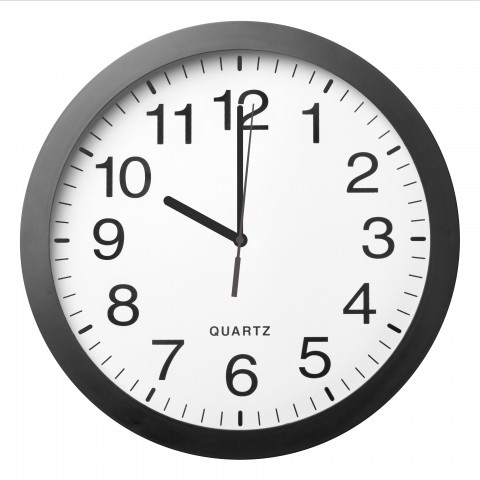Are you travelling to Hong Kong, Macau, or Guangdong soon? Do you want to put some basic Cantonese phrases in your pocket? Learning how to say hello is the first thing to do when you’re planning for your next travel or when you start learning a new language. What are you waiting for? Let’s go through the different ways to say hello in Cantonese below now in our Cantonese greetings guide! We’ll take you through some of the most common Cantonese greetings with English translations.
There are different types of “hello” phrases in Cantonese: the non time-sensitive ones (e.g. “hello” in English), the time-sensitive ones (e.g. “good morning” in English), and also one we use for phone calls specifically. We don’t have any special gestures or manners when we greet someone—simply saying the Cantonese greeting words will do. If you would like to express your enthusiasm in meeting someone, you can wave your hands while saying hello to him or her. We seldom hug, bow, or kiss on the cheek in greetings.
Now, let’s get on with the lesson—you’ll know all about Cantonese greetings in no time! You’ll also learn about other aspects of how Cantonese greet each other, such as body language and voice inflection. Enjoy!
1. Non Time-Sensitive Hello in Cantonese
- Cantonese character: 你好
- Romanization: nei5 hou2
- Meaning: Hello (formal, for both speech and writings)
The universal greeting in Cantonese is 你好, which literally translates as “you good.” Both of the syllables should be pronounced using rising tones, with the second tone slightly higher than the first. If someone says 你好 to you, you can simply respond with 你好 as well.
In addition to meaning “Hello,” you can use 你好 to introduce yourself to a new acquaintance or to draw attention from somebody. Oftentimes you can hear waiters and waitresses in Canton restaurants saying 你好 when they’re bringing you food.
- Cantonese character: 哈囉
- Romanization: haa1 lo3
- Meaning: Hello (informal, for speech)
哈囉 is “hello” with a Cantonese pronunciation. We use it to greet people casually, just like you would use “hi” in English. If someone says 哈囉, you can reply by repeating 哈囉.
Even though 哈囉 and 你好 are essentially the same, it’s possible to use them together. 哈囉,你好呀 (haa1 lo3,nei5 hou2 aa3), meaning “hello,” is usually used when you want to greet someone that you aren’t close with in a friendly way. It’s a more formal Cantonese greeting.
- Cantonese character: 你好嗎?
- Romanization: nei5 hou2 maa3
- Meaning: How are you? (formal, for both speech and writings)
你好嗎?is the Cantonese version of “How are you?” It serves as a conversation starter. If someone asks you 你好嗎? you can respond by saying 好好 (hou2 hou2) meaning “very well,” 幾好 (gei2 hou2) meaning “quite well”, 唔錯 (m4 co3) meaning “not bad,” or longer sentences depending on how you want the conversation to go.
However, unlike in English, we seldom add “thank you” at the end of our responses. Even if it’s perfectly normal to reply with “very well, thank you” in English, it would be quite odd if you reply with 好好,多謝 (hou2 hou2, do1 ze6) meaning “very well, thank you.” Instead, we usually supplement our reply with a question: 你呢? (nei5 ne1) meaning “how about you?”
- Cantonese character: 最近點呀?
- Romanization: zeoi3 gan6 dim2 aa3
- Meaning: How’s everything? (informal, for speech)
If you bump into a friend you haven’t seen for a bit, you can greet him or her with 最近點呀. 最近 is “recently” and 點呀 means “how.” Combining both, 最近點呀 stands for “how’s everything?” It’s a friendlier conversation starter and a more informal Cantonese greeting—in fact, an excellent Cantonese greeting between friends under the right circumstances. Further, there are no common responses. The reply varies depending on how well you know the person and whether you would like to keep the conversation going.
There are a few variations of 最近點呀?:
- 點呀? (dim2 aa3)
- 你最近點呀?(nei5 zeoi3 gan6 dim2 aa3)
- 你近排點呀?(nei5 gan6 paai2 dim2 aa3)
All of these variations essentially mean the same thing and can be used interchangeably with 最近點呀?.
- Cantonese character: 食咗飯未呀?
- Romanization: sik6 zo2 faan6 mei6 aa3
- Meaning: Have you had your meal? (informal, for speech)
An interesting way to say hello in Cantonese is to ask the person 食咗飯未呀? which translates as “have you had your meal yet?” Hong Kongers love to eat and we put great emphasis on dining. Asking a person 食咗飯未呀? is a great way to inquire after a person in Hong Kong; it’s like “how are you?” but with a local touch. Even though we classified it as a non time-sensitive Cantonese greeting here, it’s best to use this greeting only around meal time, or if you think that the person you’re greeting may not have had his or her meal yet.
To respond to this unique Cantonese greeting, you can say “yes” or “no.” Depending on your answer, the person may continue the conversation by asking questions such as “where did you have your meal?” or “what is blocking you from having your meal?”
- Cantonese character: 好耐冇見
- Romanization: hou2 noi6 mou5 gin3
- Meaning: Long time no see (informal, for speech)
好耐冇見 literally translates as “long time no see.” It’s typical to greet someone you haven’t seen for quite a while with 好耐冇見. And if you do so, the usual response you’ll get is 係呀,好耐冇見 (hai6 aa3,hou2 noi6 mou5 gin3) meaning “Yes, it’s been quite a while.”
You can also put the phrases introduced above together to enrich your greetings. For example, you can say 哈囉,好耐冇見,最近點呀? (haa1 lo3,hou2 noi6 mou5 gin3,zeoi3 gan6 dim2 aa3) meaning “Hi, long time no see, how’s everything?” or 哈囉,最近點呀? (haa1 lo3,zeoi3 gan6 dim2 aa3) meaning “Hi, how’s everything?” to an acquaintance you haven’t met for some time.
2. Time-Sensitive Hello in Cantonese

So, first things first—how do you say “good morning” in Cantonese?
- Cantonese character: 早晨
- Romanization: zou2 san4
- Meaning: Good morning (formal, for both speech and writing)
早 means “early” and 晨 means “dawn,” but together, 早晨 means “good morning.” We use this phrase excessively in the morning. Whether it’s greeting the security guard, the cab driver, waiters and waitresses, coworkers, classmates, or even a random stranger on the street, you cannot go wrong with 早晨. The ordinary reply to 早晨 is repeating 早晨.
- Cantonese character: 午安
- Romanization: ng5 on1
- Meaning: Good afternoon (formal, for both speech and writing)
午安 is equivalent to “good afternoon” in English, with 午 suggesting “noon” and 安 suggesting “good.” However, we seldom use 午安 in daily conversations nowadays, not even in formal settings. It can still be seen in writings, but to greet someone in the afternoon, we recommend using the non time-sensitive Cantonese greetings introduced above instead, such as 你好 and 哈囉.
- Cantonese character: 晚安
- Romanization: maan5 on1
- Meaning: Good evening (formal, for both speech and writing)
晚 is “evening” and 晚安 is the Cantonese expression for “good evening.” Similar to 午安, we rarely use 晚安 to greet someone in daily conversations, yet you can still see 晚安 in writings. On top of using it at the start of a conversation, 晚安 can be put in at the end as a way to say goodbye.
In daily conversations, we suggest using the universal Cantonese greetings such as 你好 and 哈囉 instead of 晚安.
- Cantonese character: 早唞
- Romanization: zou2 tau2
- Meaning: Good night (informal, for speech)
早唞 is the informal way to say “good night” in Cantonese, where 早 means “early” and 唞 means “rest.” Even though both 早唞 and 晚安 are related to evening, they cannot be used interchangeably. We should only say 早唞 when we plan to sleep soon—it’s like “good night, sleep tight” in English. The common way of replying to 早唞 is repeating the phrase “早唞.”
3. Phone Call Hello

- Cantonese character: 喂
- Romanization: wai2
- Meaning: Yo / Hello (informal, for speech)
Another interesting thing about “hello” in Cantonese is that we have a phrase specifically for greeting someone over the phone. When we pick up the phone, the first thing we say is 喂. 喂 is “hello” and is mainly used for answering the phone in Cantonese. It should be pronounced with a rising tone.
Note that it’s quite inappropriate and actually impolite to greet someone with 喂 in person, unless you’re very close with him or her. If you really want to use 喂 in person, you should pronounce the word in a slightly falling tone instead.
If someone says 喂 to you, you can simply answer with 喂.
Bonus: Want to Know More about Greetings in Cantonese?

From the special greetings like 食咗飯未呀? and 喂 to the universal ones like 你好 and 哈囉, you should be quite familiar now with the basics of expressing hello in Cantonese. If you want to advance and practice further or gain deeper insights into Cantonese greetings, check out the below sites at CantoneseClass101!
- Click here to check out the common ways to way hello in Cantonese with audio
- Check out our 3-Minute Cantonese video: Greetings and Useful Phrases
Conclusion: How CantoneseClass101 Can Help You Learn More Cantonese
After mastering greetings in Cantonese, it’s time to move up to the next level! With CantoneseClass101, you can have your daily dose of Cantonese whenever and wherever you want, through either your mobile apps, desktop software, or even our website. We offer entertaining, engaging, and effective lessons on various aspects of the Cantonese language and culture.
We’ve delivered until now more than 750,000,000 lessons to thousands of happy students from all around the globe. You can learn Cantonese with over 1060 audio and video lessons delivered by our knowledgeable and energetic hosts, detailed PDF lesson notes, abundance of vocabulary learning tools and spaced repetition flashcards, and a lively community to discuss the lessons with fellow learners. What are you waiting for? Download our lessons, enjoy our audio and video files, and start learning now!











